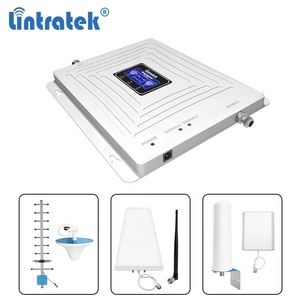Introduction to WiFi
In today's fast-paced digital world, WiFi connectivity has become an essential utility for businesses and individuals alike. It enables seamless communication, quick access to information, and efficient workflows. The term "WiFi" refers to a wireless networking technology that allows devices to exchange data over a wireless signal, thereby providing users with the freedom to connect to the internet without the need for cumbersome cables.
Types of WiFi Technologies
The landscape of WiFi technologies is continuously evolving. Here are the most common types that serve various applications:
- 802.11n: Also known as WiFi 4, it supports speeds of up to 600 Mbps and features advanced MIMO (Multiple Input Multiple Output) for better range and performance.
- 802.11ac: Popularly referred to as WiFi 5, this technology delivers speeds up to 3.5 Gbps, ideal for high-definition video streaming and online gaming.
- 802.11ax: Known as WiFi 6, it offers improved performance in crowded areas with speeds reaching 9.6 Gbps, delivering a better experience for multiple users simultaneously.
- WPA3 Security: As a part of WiFi 6, this security protocol ensures stronger encryption and safeguarding against cyber threats.
Applications of WiFi in Business
The myriad applications of WiFi in a business environment are a testament to its versatility and significance. Here are some key areas where WiFi technology plays a crucial role:
- Remote Work: Facilitates communication and collaboration among remote teams through cloud services and video conferencing tools.
- Fortifying Customer Engagement: Offering free WiFi in public spaces enhances customer experience, encouraging longer visits and repeat business.
- IoT Connectivity: IoT devices in smart offices or factories rely heavily on robust WiFi networks for seamless inter-device communication.
- Data Analytics: With devices connected through WiFi, businesses can analyze traffic patterns, user behavior, and sales metrics more effectively.
Features That Enhance WiFi Performance
Understanding the features of WiFi can greatly improve your connectivity experience. Here are some notable characteristics:
- Dual-Band Support: Most modern routers support both 2.4 GHz and 5 GHz bands, allowing better device compatibility and reduced interference.
- Beamforming Technology: This feature directs the WiFi signal towards connected devices, enhancing the range and stability of the connection.
- MU-MIMO Technology: Multi-User, Multiple Input, Multiple Output allows multiple devices to connect and communicate simultaneously without sacrificing speed.
- WiFi Mesh Systems: These systems use multiple nodes to cover larger areas without dead zones, ensuring a strong signal throughout the designated space.






















































